Log in or create new account to save this product to your wishlist.

How to Grow and Care for A Lemon Tree
Dreaming of zesty lemons from your garden? Then you’ll be pleased to know that with the right care, you can cultivate these citrus beauties and enjoy their fragrant blossoms and tangy fruits. From selecting the perfect variety to mastering essential care techniques, this guide will help you on your journey to become a successful lemon tree grower.
In this article, you’ll discover how to choose the ideal lemon tree for your climate, learn the ins and outs of planting, and get to grips with the key aspects of lemon tree care. We’ll explore common problems that might crop up when growing lemons in pots and share tips on how to look after your lemon plant to ensure it thrives. Whether you’re starting from seed or nurturing a mature tree, you’ll find all the information you need to grow healthy, productive lemon trees right here.
- Lemon tree profile
- Choosing the right lemon tree variety
- Popular lemon varieties for the UK
- Planting your lemon tree
- Essential lemon tree care
- FAQ about lemon tree growing
- Ready to get started?
Lemon tree profile

-
Light: Lemon trees thrive in sunlight. Best place them in the sunniest spot you can find on your patio or in your garden.
-
Soil: Well-draining, slightly acidic soil with a pH between 5.5 and 6.5 is ideal for lemon trees.
-
Size: Depending on the size lemon trees typically reach a height 3 to 5 feet in the UK.
-
Watering: Lemon trees prefer consistent moisture, but dislike waterlogged roots.
-
Fruiting: Lemon trees typically fruit from later winter to early spring. With proper care, a mature tree can produce around 30 lemons per year.
Choosing the right lemon tree variety
Ever been on holiday around the Mediterranean? Plenty of lemon trees grow in this sunny climate. Basically, anyone with a garden can grow a lemon tree there. But if you want to grow one of these beauties in the United Kingdom, it is not quite as easy. Foremost, you have to pick the right kind, one that doesn’t need too much sunlight and can stand a little cold. Growing lemons is not that easy in the middle of the North Sea.
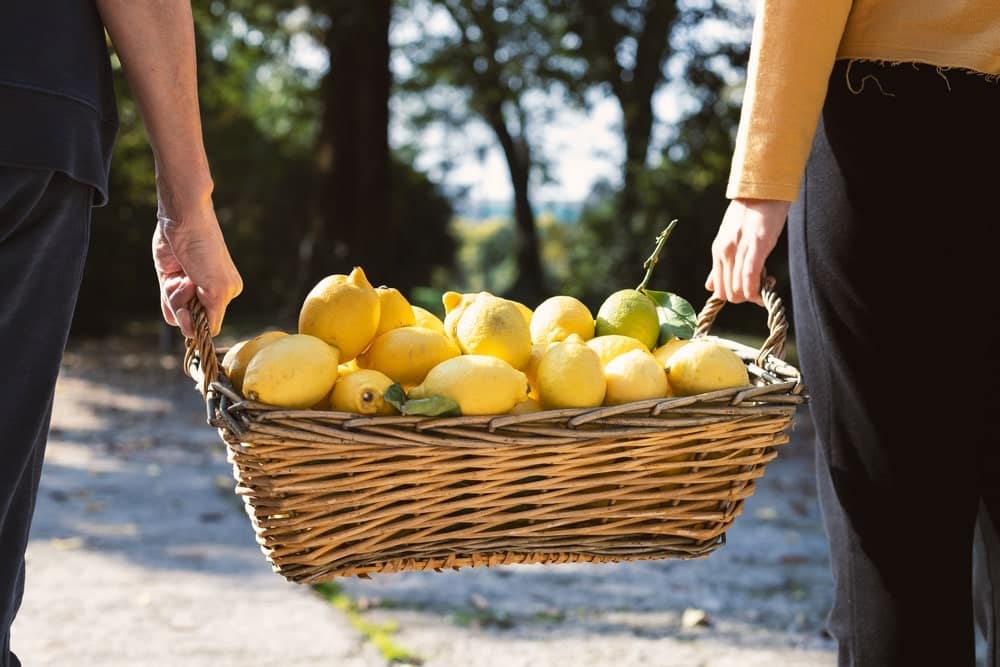
Popular lemon varieties for the UK
One of the most suitable choices for UK gardeners is the Meyer lemon. Known for its cold hardiness and sweet, less acidic fruit, the Meyer lemon offers a higher success rate in the British climate. This variety can tolerate temperatures down to -6 °C, making it a popular option for indoor cultivation or growing in conservatories in milder regions.
Another variety to consider is the Eureka lemon, which is one of the most common types you’ll find at nurseries. Although not as cold-hardy as the Meyer, it’s still a good choice for UK growers who can provide adequate protection during winter months.
For those looking for something a bit different, the Lisbon lemon is worth considering. This variety is more drought-tolerant and frost-resistant than many other lemon types, which can be beneficial in our variable climate.
Dwarf vs. standard lemon trees
When choosing a lemon tree, you’ll need to decide between dwarf and standard varieties.
Dwarf lemon trees are ideal for smaller spaces such as kitchens, windowsills, or balconies. These trees have lower graft points and are on dwarf rootstock, allowing them to stay a manageable size while still producing plenty of fruit. They’re perfect for container growing, which is often necessary to move plants indoors during colder months.
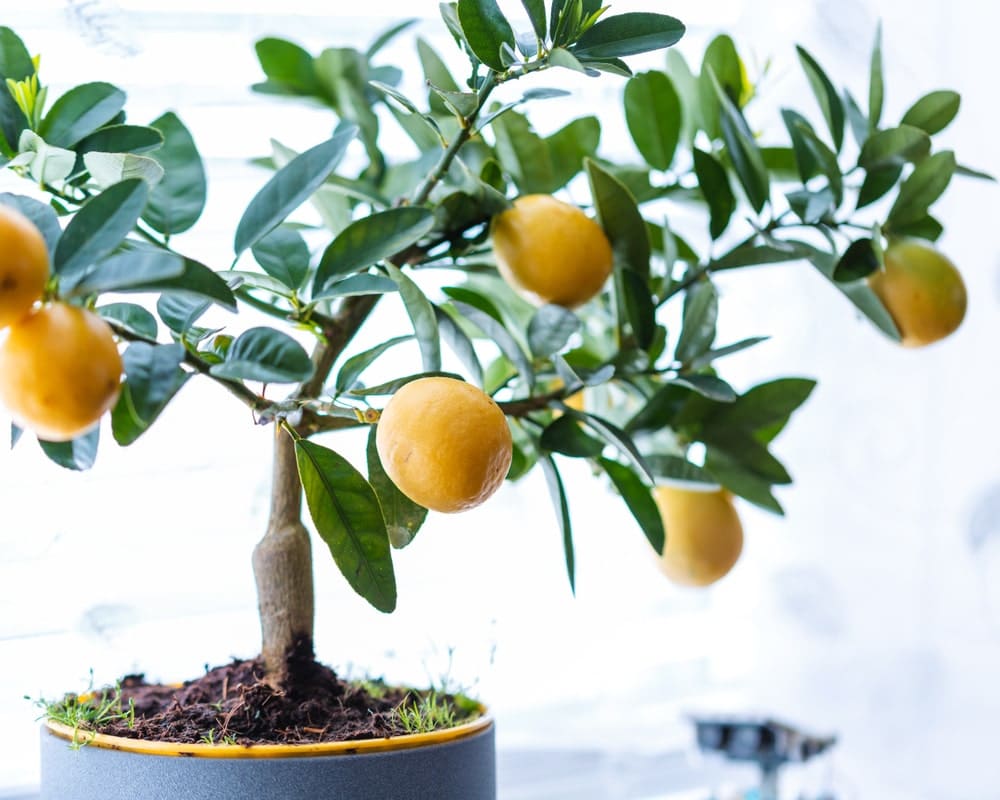
Standard lemon trees, on the other hand, can grow much larger—typically between 15 and 25 feet (ca. 8 m) tall when planted in the ground. They’re usually grafted onto sour orange rootstock, which allows for this larger size. Standard trees generally produce a greater quantity of fruit, but they require more space and are less suitable for container growing.
Semi-dwarf varieties offer a middle ground, providing a compromise between size and fruit production. These are frequently grafted onto trifoliate orange rootstock.
Grafted vs. seed-grown trees
When choosing a lemon tree, you’ll also need to decide between grafted and seed-grown trees. This choice can significantly impact how quickly your tree will produce fruit and the quality of that fruit.
Grafted lemon trees are the most common type you’ll find for sale, and for good reason. These trees are created by attaching a cutting from a mature, fruit-producing tree (known as the scion) onto the rootstock of another citrus tree.
This method ensures that the new tree will produce fruit identical to its parent tree, and it will do so much more quickly—often within 3 years of planting.
Seed-growing is a gamble
Seed-grown lemon trees, while an interesting project, are less predictable and take much longer to bear fruit. If you grow a lemon tree from the seed, you might need to wait 10 years for it to produce fruit. Even then, the fruit will most likely not be identical to the lemon from which the seed came. Lemons are hybrids, and their seeds don’t produce true-to-type trees.
For most UK gardeners, especially those new to growing citrus, a grafted tree is the best choice. It offers a more reliable and quicker path to fruit production. When buying a lemon tree, look for one that’s already flowering or fruiting to ensure you’re getting a mature, grafted tree that’s ready to produce. But if you just want a lemon for the fun of it, go ahead and plant a seed or two.
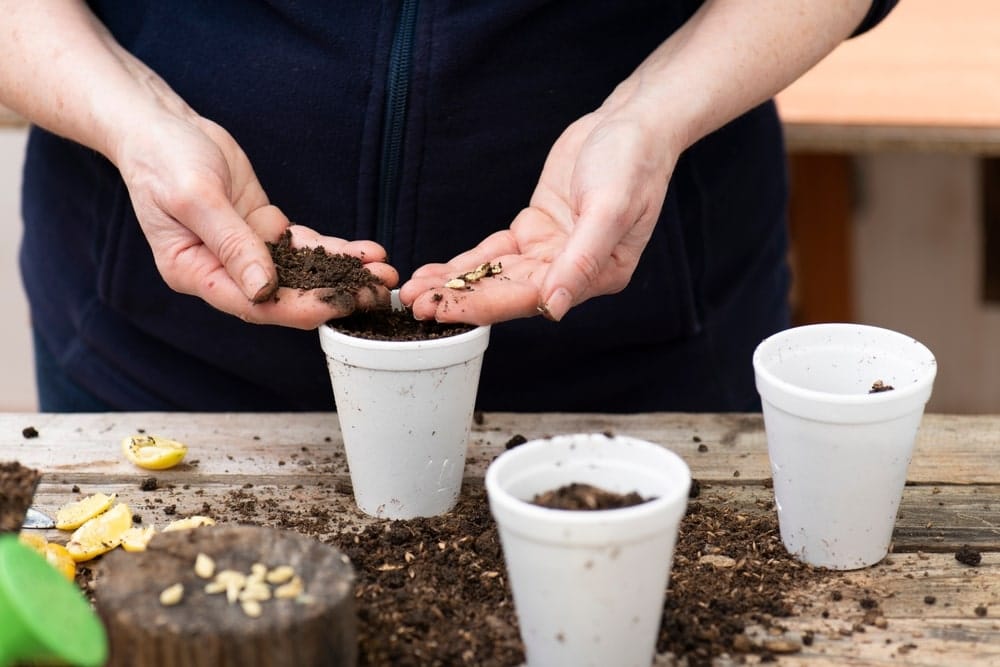
Frost protection is always necessary
Remember, regardless of the variety you choose, all lemon trees in the UK will need protection from frost. Most are best kept in a greenhouse, conservatory, or other bright, frost-free location over winter, if not year-round. With the right choice of variety and proper care, you can enjoy the rewarding experience of growing your lemons, even in the UK climate.
Planting your lemon tree
When it comes to growing a lemon tree, selecting the appropriate pot and soil is crucial for its success. For most young lemon trees, a 12-inch-diameter container is an ideal starter size. As your tree grows, you can gradually increase the pot size. Lemon trees do well in various containers, from lightweight resin to porous terra-cotta. However, glazed pots are often recommended as they help retain moisture better than unglazed options.
The primary requirements for your pot are large, unobstructed drainage holes and lighter colours to reflect heat. Always use a deep saucer under your pot to protect the floors from water, and consider a wheeled plant dolly underneath, as lemon trees can become quite heavy as they mature.
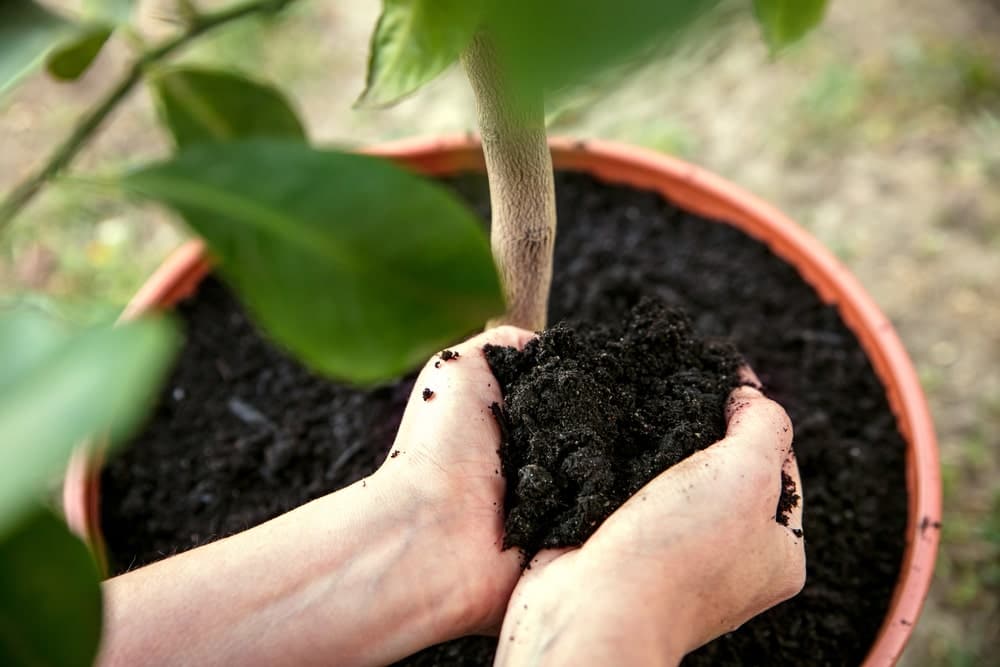
The right soil for lemon tree
For soil, lemon trees prefer a well-draining, slightly acidic mix. You can use a good quality container or ericaceous compost, or create your own mix using peat moss, perlite, vermiculite, and composted bark. The ideal pH for lemon trees is between 5 and 5.5. Adding a handful of sharp sand or grit can improve drainage further.
When and how to plant
The best time to plant your lemon tree is in the spring, after the danger of frost has passed. This gives your tree the entire growing season to establish itself before winter arrives. If you’re repotting an existing lemon tree, early spring through to mid-summer is ideal, as the tree’s roots are actively growing during this period.
To plant your lemon tree, start by filling the bottom of your chosen container with potting soil mix and tamp it lightly. Remove the tree from its nursery pot and place it in the new container, ensuring that the flare at the base of the trunk sits slightly above the soil line. This helps ensure the roots can breathe properly.
Fill around your tree with soil, making sure it can’t settle too deep in the pot. Leave a few inches at the top for watering. Water the tree thoroughly after planting to help settle the soil around the roots.
Indoor vs. outdoor planting
In the UK, lemon trees are best grown in containers that can be moved indoors during colder months. During summer, many growers take their lemon trees outside onto a sunny balcony or patio, where they can benefit from fresh air and natural sunlight.
When keeping your lemon tree indoors, place it in a sunny south- or southwest-facing window where the most sunlight hits. Keep it away from radiators, underfloor heating, or draughts. If it’s on a windowsill, ensure the leaves don’t touch the glass.
For outdoor placement, lemon trees need plenty of sunlight and a sheltered spot. However, be cautious when moving your tree outdoors after a period indoors. The sudden change in temperature and light intensity can be stressful for the tree. To prevent sunburn, slowly acclimatise your tree by first placing it in a shady part of the garden, then gradually moving it to sunnier spots.
Essential lemon tree care
Proper watering is crucial for the health of your lemon tree. These citrus plants prefer soil that’s consistently moist but not waterlogged. To check if your tree requires watering, stick your finger about 3 to 6 inches (ca. 15 cm) into the soil. If it feels dry at this depth, it’s time to water.
For potted lemon trees, you might need to water twice a week, depending on the climate and size of the plant. When watering, do so thoroughly until water drains from the bottom of the pot. This is more effective than just sprinkling the surface.
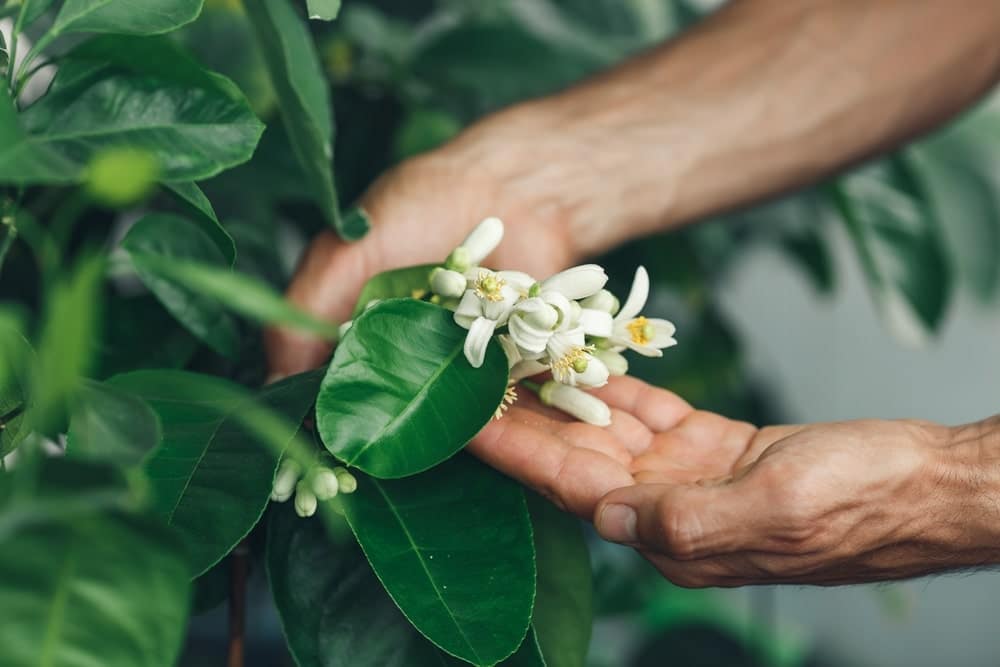
Ground-planted lemon trees typically need watering once a week, either with a hose or from rainwater. However, it’s essential to adjust your watering schedule based on the weather and soil conditions. In hot summer months, you might need to water more frequently, while in cooler months, you can reduce watering.
Remember, both overwatering and underwatering can harm your lemon tree. Overwatering can lead to root rot and fungal diseases, while underwatering can cause leaf loss and stress the tree. If you notice yellow curled leaves or decaying roots, you might be overwatering. These are common problems with lemon trees in pots.
Fertilising schedule
Lemon trees are heavy feeders and require regular fertilisation to produce healthy foliage and fruit. Use a fertiliser specifically formulated for citrus trees, with an NPK ratio where each number is no higher than eight. An ideal NPK ratio for lemon trees is 6-6-6.
During the growing season (spring and summer), feed your lemon tree every 4–6 weeks. Apply the fertiliser in a circle around the tree, extending as wide as the tree is tall. This ensures the nutrients reach the entire root system.
For potted lemon trees, you can use a liquid fertiliser weekly from April to September. In winter (October to March), reduce feeding to once a month. Always follow the instructions on the fertiliser package for the correct dosage.
Pruning techniques
Pruning is essential to maintain the shape of your lemon tree and promote healthy growth. The best time to prune is from late winter to early spring, before the tree starts its active growth period.
Start by removing any dead, diseased, or damaged branches. Then, thin out the branch structure to improve air circulation and light penetration. Remove any branches that cross or rub against each other.
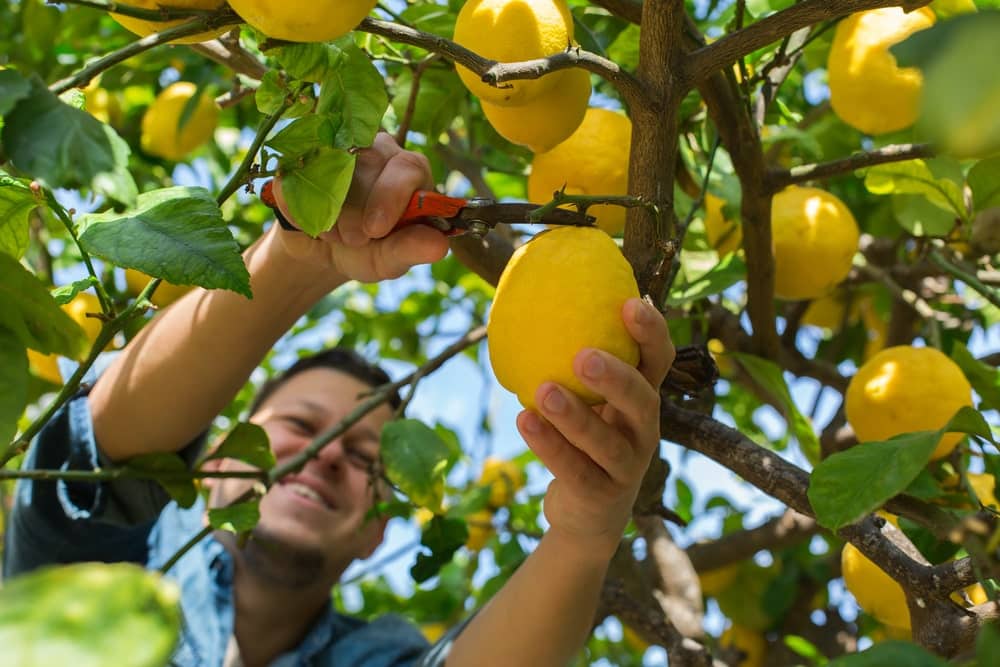
For potted lemon trees, keep them to a manageable size by pruning regularly. Don’t allow the tree to grow taller than four feet if you’re growing it indoors.
When pruning, always use clean, sharp tools to make clean cuts just above a leaf node. Cut at a 45-degree angle to promote healthy new growth. Remember the one-third rule: never remove more than a third of the tree’s growth in one year.
FAQ about lemon tree growing
Yes, you can grow lemons in the UK, but they require special care due to the climate. Lemon trees need protection from frost, so they’re best grown in pots that can be moved indoors during winter.
To care for a lemon tree, provide it with plenty of sunlight, water regularly but avoid waterlogging, and feed with a citrus-specific fertiliser. Keep it in a warm, sheltered spot and bring it indoors when temperatures drop below 10 °C.
Pruning a lemon tree in July is generally fine in the UK. This timing allows for new growth to harden off before winter, but avoid heavy pruning and focus on removing dead, diseased, or crossing branches.
Ready to get started?
By following these care guidelines, you can grow a healthy lemon tree that will reward you with fragrant blossoms and juicy fruits. Remember, consistency is key when it comes to looking after a lemon plant. With proper care, your lemon tree can thrive and become a beautiful addition to your garden or home. Are you interested in other fruit bearing trees like apple trees, fig trees or plum trees? Then check out our specific guides. Furthermore, please leave a comment for us, if you have tips yourself or want to ask our experts a question.
Happy gardening!
-
Orchids: A Complete Guide on How to Care for ThemWant to give your orchid the best possible care? Discover essential tips from placement to watering and pruning. Learn everything you need to know!Read more
-
Growing Wisteria Made Simple: From Planting to Perfect BloomsWith blossoms like a purple waterfall, Wisteria sets an almost magical and colourful mood. If you want to grow this beauty in your garden, you’ll need a bit of patience. Don’t worry, it will most definitely pay off.Read more
-
How to Build a DIY Greenhouse: A Practical Guide for Smart SpendersImagine extending your growing season throughout the year, nurturing tender plants regardless of the weather, and creating a personal garden sanctuary. This is precisely what a DIY greenhouse offers you. Let’s learn how to build one.Read more
-
How to Grow Eucalyptus in British GardensWith a little love and care, eucalyptus trees can thrive in English gardens. Since they don’t germinate well without proper help, there are not considered invasive. So, there is no reason not to plant them if you enjoy their looks.Read more
-
Transform Your Garden with All-Year-Round Flowering PlantsDid you know you can enjoy blooming flowers even in January? With the right selection of all year round plants, there’s no need to wait until spring to add some colour to your garden.Read more
-
How to Create a Butterfly Garden: A Simple Guide for British GardensThe UK's butterfly population includes 59 different species. These beautiful winged creatures face a steady decline because of habitat loss, pollution and changing weather patterns. Your garden can become a vital link between nature reserves and natural habitats. Let’s explore how.Read more
-
Volcanic Rock Dust for Your Garden—Application and TipsDid you know that volcanic rock dust is a brilliant organic soil improver? This article explains exactly what it's good for and how to use it properly.Read more
-
How to Use Landscape Fabric ProperlyIf weeds or erosion in your garden are troubling you, landscape fabric might be the solution. We’ll explain how and when to use it properly, just keep on reading.Read more
Leave a comment
Your answer will be displayed on the site and the interested party will be notified by email.
Leave a comment
Have a question or want to share your experience? Leave us a comment.

- Order by 2PM = shipped today
- 250.000+ satisfied customers!
- 60 day satisfaction guarantee

- Order by 2PM = shipped today
- 250.000+ satisfied customers!
- 60 day satisfaction guarantee

🌱 All important maintenance moments for your lawn during the year. Leave your email and we will send you the lawn calendar for free.
Enter your email
Receive the lawn calendar in the mail
Enjoy a green lawn all year round!


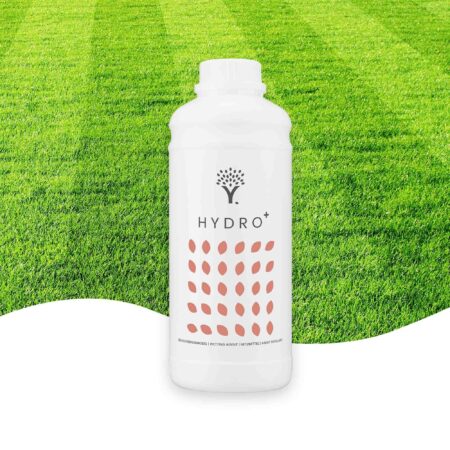












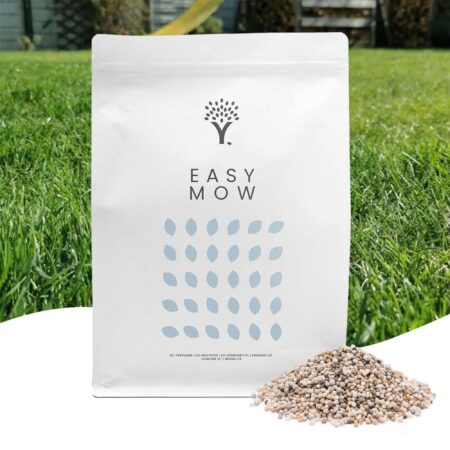
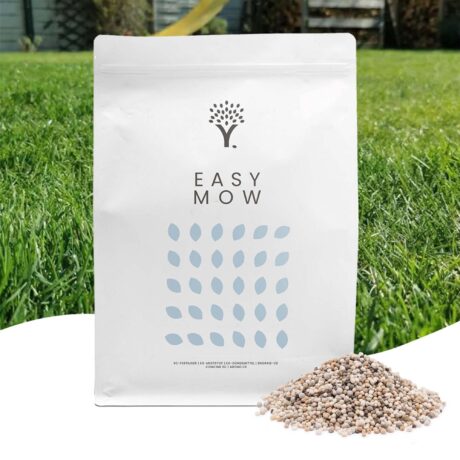





Comments (0)
There are no comments yet. Well then, what are you waiting for to
Be the first to write your comment!inaugurate this pretty page?
Do you have some comments?